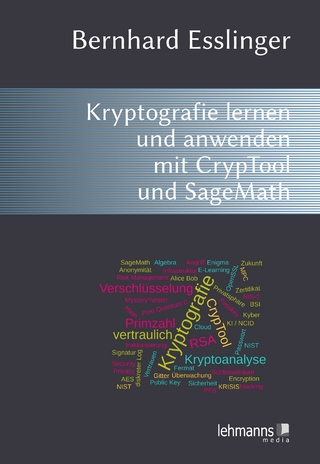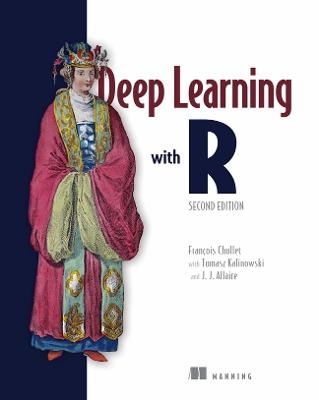Condition
Springer Berlin (Verlag)
978-3-642-38895-8 (ISBN)
This book gathers threads that have evolved across different mathematical disciplines into seamless narrative. It deals with condition as a main aspect in the understanding of the performance ---regarding both stability and complexity--- of numerical algorithms. While the role of condition was shaped in the last half-century, so far there has not been a monograph treating this subject in a uniform and systematic way.
The book puts special emphasis on the probabilistic analysis of numerical algorithms via the analysis of the corresponding condition.
The exposition's level increases along the book, starting in the context
of linear algebra at an undergraduate level and reaching in its third part the recent developments and partial solutions for Smale's 17th problem which can be explained within a graduate course. Its middle part contains a condition-based course on linear programming that fills a gap between the current elementary expositions.
Peter Bürgisser is an internationally recognized expert in complexity theory. He is associate editor of the journal Computational Complexity and he was invited speaker at the 2010 International Congress Mathematicians. Felipe Cucker is well known for his work on complexity over the real numbers, jointly with L. Blum, S. Smale and M. Shub. He also worked in learning theory and made seminal contributions to condition numbers in optimization and their probabilistic analyses. F.C. is former chair of the Society for the Foundations of Computational Mathematics and the current managing editor of the society's journal.
Preface.- Overture: On the Condition of Numerical Problems and the Numbers that Measure It.- I Condition in Linear Algebra (Adagio): 1 Normwise Condition of Linear Equation Solving.- 2 Probabilistic Analysis.- 3 Error Analysis of Triangular Linear Systems.- 4 Probabilistic Analysis of Rectangular Matrices.- 5 Condition Numbers and Iterative Algorithms.- Intermezzo I: Condition of Structured Data.- II Condition in Linear Optimization (Andante): 6 A Condition Number for Polyhedral Conic Systems.- 7 The Ellipsoid Method.- 8 Linear Programs and their Solution Sets.- 9 Interior-point Methods.- 10 The Linear Programming Feasibility Problem.- 11 Condition and Linear Programming Optimization.- 12 Average Analysis of the RCC Condition Number.- 13 Probabilistic Analyses of the GCC Condition Number.- Intermezzo II: The Condition of the Condition.- III Condition in Polynomial Equation Solving (Allegro con brio): 14 A Geometric Framework for Condition Numbers.- 15 Homotopy Continuation and Newton'sMethod.- 16 Homogeneous Polynomial Systems.- 17 Smale's 17th Problem: I.- 18 Smale's 17th Problem: II.- 19 Real Polynomial Systems.- 20 Probabilistic Analysis of Conic Condition Numbers: I. The Complex Case 4.- 21 Probabilistic Analysis of Conic Condition Numbers: II. The Real Case.- Appendix .
"The book under review is divided into three parts, 'which approximately correspond to themes of conditioning in linear algebra, linear programming, and polynomial equation solving'. ... Given its detailed covering of a wide range of topics and its geometric approach, I think this book may well become a must-have for all who are seriously interested in numerical algorithms." (S. C. Coutinho, The Mathematical Gazette, Vol. 99 (546), November, 2015)
"This book published in 2013 is the first book devoted entirely on this subject. It must be said that this book is a full success since it realizes a synthesis of ideas and works on the mathematical foundations on conditioning. ... The book is self contained and easy to read ... . The book ends with the statement of eighteen open problems that shows that Mr. Condition has a bright future ahead of him." (Jean-Claude Yakoubsohn, Jahresbericht der Deutschen Mathematiker-Vereinigung, Vol. 117, 2015)
"The authors intend with this book to fill the gap by addressing the probabilistic analysis of the algorithms related to condition numbers. ... Under the vigilant eyes of so many famous scientists, it is sure that this book is a milestone in this area of research. ... The monograph under review is without any doubt a very carefully prepared one, and researchers interested in numerical analysis (and related topics) should become familiar with this book." (Elena Pelican, Mathematical Reviews, August, 2014)
"This book studies a type of numerical imprecision that arises universally. ... Bürgisser (Technical Univ. of Berlin, Germany) and Cucker (City Univ. of Hong Kong) provide the first book-length treatment of the concept. ... Summing Up: Recommended. Upper-division undergraduates through researchers/faculty." (D. V. Feldman, Choice, Vol. 51 (11), July, 2014)
"The authors of this book discuss the ways that such errors are produced in a computer, and consider the use of condition numbers to understand the performance of numerical algorithms. ... this monograph not only offers a well-organized and systematic introduction to the subject, but also works as a useful reference for advanced researchers." (Tanbir Ahmed, Computing Reviews, November, 2013)| Erscheint lt. Verlag | 23.8.2013 |
|---|---|
| Reihe/Serie | Grundlehren der mathematischen Wissenschaften |
| Zusatzinfo | XXXI, 554 p. |
| Verlagsort | Berlin |
| Sprache | englisch |
| Maße | 155 x 235 mm |
| Gewicht | 1006 g |
| Themenwelt | Informatik ► Theorie / Studium ► Algorithmen |
| Mathematik / Informatik ► Mathematik ► Analysis | |
| Mathematik / Informatik ► Mathematik ► Wahrscheinlichkeit / Kombinatorik | |
| Schlagworte | Complexity • condition numbers • homotopy continuation • linear optimization • Numerische Mathematik • probabilistic analysis of algorithms |
| ISBN-10 | 3-642-38895-7 / 3642388957 |
| ISBN-13 | 978-3-642-38895-8 / 9783642388958 |
| Zustand | Neuware |
| Informationen gemäß Produktsicherheitsverordnung (GPSR) | |
| Haben Sie eine Frage zum Produkt? |
aus dem Bereich




